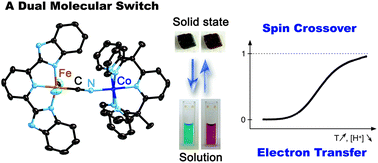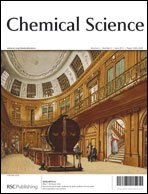Spin crossover or intra-molecular electron transfer in a cyanido-bridged Fe/Co dinuclear dumbbell: a matter of state†
Abstract
The design of molecule-based systems displaying tuneable optical and/or magnetic properties under external stimuli has received a great deal of attention in the past few years. This interest is driven by the potential applications in high-performance molecule-based electronics in the areas of recording media, switches, sensors, and displays. As an example, three-dimensional Fe/Co Prussian blue compounds exhibit a concomitant change in magnetic and optical properties due to a temperature- or light-induced metal-to-metal electron transfer. The foregoing remarkable properties in Prussian blues prompted us to design soluble molecular fragments of these coordination networks through a rational building-block approach in order to mimic their properties on a single molecule. With a judicious choice of the


 Please wait while we load your content...
Please wait while we load your content...